Dogs naturally shed their fur to get rid of old or damaged hair, but when hair loss becomes excessive, it may signal an underlying issue. If you’ve noticed an increase in shedding, bald patches, or skin irritation, your pup could be dealing with anything from allergies and stress to medical conditions or nutritional deficiencies. Understanding the cause of abnormal hair loss is essential in helping your dog maintain a healthy coat and skin.
While shedding varies by breed, sudden or extreme hair loss shouldn’t be ignored. Factors like hormonal imbalances, parasites, infections, or even anxiety can contribute to excessive shedding. Pinpointing the root cause with the help of a veterinarian can ensure your dog gets the right treatment—whether it’s a dietary adjustment, stress management, or medical intervention.
Is Your Dog Losing Hair? Here Are 8 Reasons Behind Excessive Shedding.
1. Breed-Specific Hair Loss
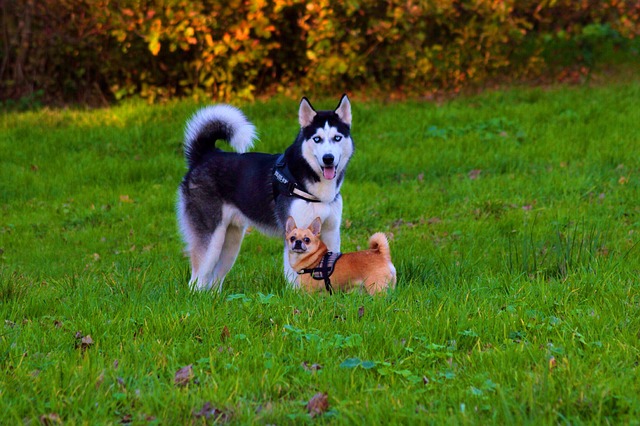
Some dogs lose more hair than others based on their breed. Your average short-haired Labrador or Beagle sheds much more than a Poodle or Schnauzer because these breeds have completely different hair types.
Dogs bred to withstand harsh temperatures, like Huskies and Malamutes, have coats that thicken in winter, then thin out in the spring with an epic mass-shedding event known as coat blow. Some even experience a second coat blow in the fall.
Several breeds, including Doberman Pinschers, Boxers, Chihuahuas, and Bulldogs, are known to have genetic predispositions to certain types of alopecia (the fancy term for hair loss).
2. Parasites
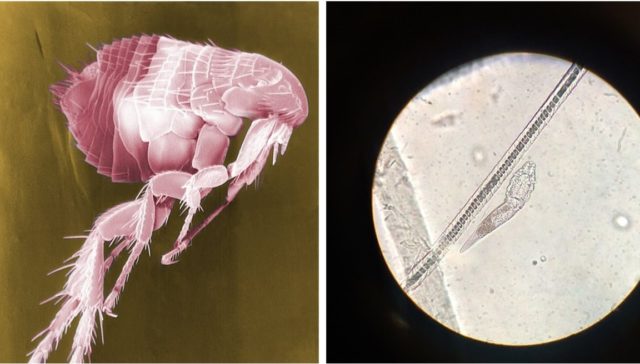
Dogs may lose hair as a reaction to an infestation of fleas or skin mites. When fleas bite, their saliva causes an immune response within the body. Pups that are allergic to flea saliva develop a full-body reaction with intense itching and inflamed skin. They often suffer from hair loss, sores, and infections as a result of licking, scratching, and chewing on their skin.
Demodex mites live in dogs’ hair follicles. Young puppies and immune-compromised adults sometimes experience an overgrowth of mites and develop a condition known as Demodectic mange, which causes lesions, thickening of the skin, and hair loss.
Related: Best Dog & Cat Hair Removers Reviewed
Demodex cannot be transferred between dogs or to humans, but another common mite is highly contagious to other pets and family members! Infestation with Sarcoptes mites is commonly referred to as Sarcoptic mange or scabies. It is extremely itchy and causes sores, crusts, and patchy hair loss.
In addition to skin parasites, intestinal worms may also damage the dog’s ability to process nutrients, leading to poor coat health and increased shedding.
Dr. Primm recommends seeing your vet at the first sign of these pesky parasites:
“Any dog with skin lesions should be evaluated by a veterinarian to protect him and your human family. Early intervention is critical to minimize suffering and ensure effective treatment.”
3. Allergies

Allergies are a common and persistent problem for many dogs. Like humans, dogs can be allergic to just about anything, from ingredients in their food to environmental factors. While there can be respiratory symptoms, dogs more commonly have skin reactions when exposed to allergens. The body reacts to offending substances by releasing histamine into the bloodstream, which results in itching and excess shedding.
Cooler weather may provide some relief for dogs with seasonal allergies, but those with food sensitivities or reactions to indoor stimuli may suffer year-round.
“It is less likely to be a problem in the winter because a lot of dogs are allergic to spring through fall allergens, like molds and pollens,” says Dr. Primm. “But if your dog is allergic to something in his food or house dust (non-seasonal allergy), you might not see a difference in the winter. The excessive shedding will usually be accompanied by pruritus (itching) and possibly recurrent ear infections, itchy eyes and paw licking.”
4. Poor Nutrition
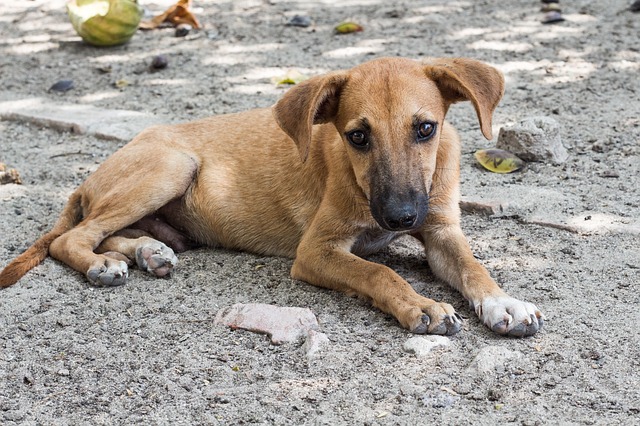
Undernourishment is rarely a problem for dogs in loving homes unless there is competition from other pets. However, some pups have stricter dietary needs than others. Growing puppies require higher calories, protein, and fat to help them develop, and dogs with certain medical conditions may also need adjustments to their diets to maintain healthy skin and hair.
“Overall health status and diet can also play a role in the hair coat,” Dr. Primm says. “All dogs should eat a premium, high-quality or homemade diet, and the owner should understand that you ‘get what you pay for’ with economy pet food.”
Finding the perfect diet for your dog’s individual needs can be complicated. Speak to your vet for tips and recommendations on how to prevent hair loss.
5. Bacterial or Fungal Infections
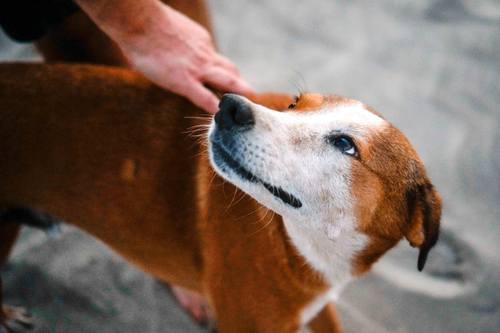
Ringworm is not listed along with fleas and mites because it is actually a fungal infection, not a type of parasite. It causes circular patches of itchy, inflamed skin and hair loss. Although more common in puppies, ringworm can occur in any dog and is highly contagious to humans and other pets.
Skin infections caused by the Staphylococcus aurea bacteria often closely resemble ringworm lesions. Staph is present everywhere, but in order for an infection to develop, the bacteria must be introduced into the body through irritated or abraded skin – typically from the dog licking, chewing, or scratching.
Should you notice round, scaly patches of hair loss and irritation on your dog’s skin, see your vet for diagnosis and treatment.
6. Hormone Fluctuations

Mama dogs often experience hair loss related to hormonal changes during pregnancy and nursing. The hair follicles go into a resting phase to reserve as much energy as possible for the puppies. This causes the coat to shed heavily, similar to the seasonal coat blow seen in many double-coated dog breeds.
There are also several imbalances related to the sex hormones of male and female dogs that may cause them to lose excessive amounts of hair. If your veterinarian suspects this to be the cause of your dog’s hair loss, he or she will start reproductive hormone therapy and likely recommend a healthy dietary protocol as well as supplementation with omega fatty acids.
7. Certain Illnesses
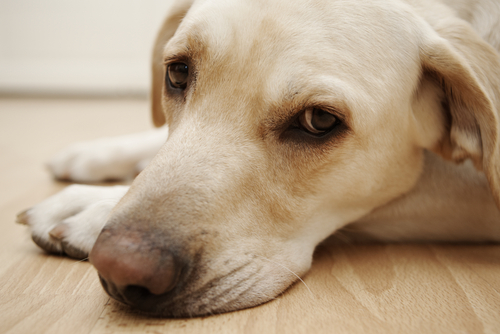
As much as we hate to think of our pups suffering from a serious medical condition, a few diseases cause abnormal hair loss in dogs.
“There are metabolic disorders that affect the health of the hair coat, like hypothyroidism and Cushing’s Disease,” Dr. Primm explains. “These are diseases that have other, even more serious consequences, so it is important to see your vet for wellness care and screening every year and more frequently if you notice changes in your dog’s appetite, thirst, energy level or other changes.”
Hypothyroidism is quite common in dogs and occurs when the thyroid gland fails to produce adequate amounts of hormones. Dogs with Cushing’s Disease suffer from an overproduction of corticosteroids in the adrenal glands. Pets taking long-term prescribed steroids for other health problems are at an increased risk for Cushing’s.
8. Stress-Related Hair Loss

If your dog has been thoroughly examined by a vet and the cause of his excessive hair loss is still a mystery, it could be a sign of stress. Severe anxiety from separation or changes in the home can manifest as physical symptoms, including vomiting, diarrhea, and compulsive scratching or licking.
Not only will this behavior cause bald patches, but dogs that obsessively lick one particular spot on the body may give themselves lesions or skin infections known as acral lick dermatitis.
Supporting Your Dog’s Coat Health
If your dog’s hair loss seems excessive, addressing the underlying cause is key to restoring its coat’s health. A balanced diet, proper grooming, and stress management all help reduce shedding and promote a strong, shiny coat.
In some cases, natural supplements rich in omega fatty acids, biotin, or probiotics can help improve skin health and minimize shedding. Always consult your veterinarian before making changes to your dog’s routine to ensure the best approach. With the right care, you can help keep your pup’s coat looking healthy, vibrant, and beautiful!
 Toledo, United States.
Toledo, United States.
